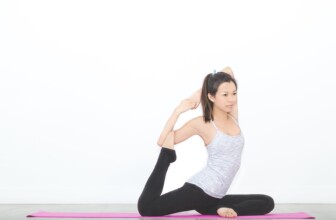Stand Tall: The Ultimate Guide to Posture Correction for a Healthier You
In today’s fast-paced world, many of us spend hours hunched over computers or staring at smartphones, leading to poor posture and a range of health issues. Correcting posture isn’t just about sitting up straight; it’s about enhancing health, boosting confidence, and enriching quality of life. This comprehensive guide will explore the importance of good posture, the common causes of poor posture, practical correction tips, and an extensive array of resources.
Table of Contents
- 1. The Importance of Good Posture
- 2. Common Posture Issues
- 3. Tips for Correcting Posture
- 4. Exercises to Improve Posture
- 5. Real-Life Case Studies
- 6. Frequently Asked Questions
- 7. Resources
- 8. Conclusion and Future Trends
1. The Importance of Good Posture
Good posture is essential for overall health. It affects not only how we look, but how we feel and function on a daily basis. Here are some reasons why maintaining proper posture is crucial:
- Reduces Back Pain: Proper alignment of the spine helps relieve pressure on the back muscles, reducing chronic pain.
- Enhances Breathing: Good posture allows the lungs to expand fully, leading to better oxygen intake and improved respiratory function.
- Boosts Confidence: Standing tall can lead to greater self-esteem and confidence as body language often reflects our internal state.
- Improves Circulation: Proper spinal alignment also promotes better blood circulation, ensuring that nutrients are delivered effectively throughout the body.
- Improves Digestion: Good posture can assist the digestive process; slouching can compress organs and hinder digestion.
2. Common Posture Issues
Many people experience various posture-related issues. Understanding these can help individuals pinpoint their specific concerns:
- Forward Head Posture: This condition arises when the head is positioned forward of the body, often due to excessive smartphone use or desk work.
- Rounded Shoulders: Characterized by shoulders that are curled forward, this often results from prolonged sitting or poor screen habits.
- Back Kyphosis: Often known as hunchback, this involves a rounded upper back caused by slumping or excessive sitting.
- Flat Back Syndrome: This occurs when there is a decrease in the natural curvature of the lumbar spine, leading to an upright lower back.
- Sway Back: A condition where the pelvis is tilted forward and the stomach protrudes, often as a result of weak abdominal muscles.
3. Tips for Correcting Posture
Implementing daily habits to improve posture can dramatically change how one feels. Here are some practical tips:
- Be Mindful: Awareness is the first step. Regularly check your posture when sitting, standing, or walking.
- Adjust Your Workspace: Ensure your desk and chair are ergonomically designed to promote good posture.
- Use Supportive Furniture: Chairs with lumbar support can help keep your spine in a healthy position.
- Take Breaks: Make a habit of standing up and moving around every 30-60 minutes to counteract the effects of prolonged sitting.
- Wear Appropriate Footwear: Shoes with good support can influence overall body positioning. Avoid overly flat or high-heeled shoes.
4. Exercises to Improve Posture
Certain exercises can bolster muscle strength and flexibility, essential for maintaining good posture. Here’s a list of effective movements:
- Planks: Builds core strength, which is vital for supporting the spine.
- Shoulder Rolls: Helps release tension in the shoulder area.
- Chest Stretch: Opens the chest and counteracts rounded shoulders.
- Bridges: Strengthens the glutes and lower back, enhancing pelvic alignment.
- Cat-Cow Stretch: Promotes spinal mobility and awareness.
5. Real-Life Case Studies
Case Study 1: Anna's Transformation
Anna, a 28-year-old graphic designer, began experiencing persistent neck and back pain due to hours at her desk. After realizing her posture was contributing to these issues, she attended a workshop on posture correction and began implementing changes. With a combination of ergonomic adjustments, mindfulness practices, and exercises to strengthen her core and back muscles, Anna saw significant improvement in just three months, leading to reduced pain and greater productivity at work.
Case Study 2: Mike's Journey
Mike, a 35-year-old software engineer, faced social anxiety stemming from low self-esteem, partly fueled by poor posture. Upon realizing the impact of posture on his confidence, he started a weekly yoga class focused on posture correction. Over six months, not only did Mike's posture improve, but he also felt more confident, which positively influenced both his personal and professional life.
6. Frequently Asked Questions
Q: How long will it take to correct my posture?
A: The time frame for correcting posture varies from person to person. With consistent practice, noticeable improvements can usually be seen within a few weeks to months.
Q: Is there a correlation between poor posture and mental health?
A: Yes, studies have shown that poor posture can contribute to feelings of depression and anxiety. Conversely, good posture can help boost mood and confidence.
Q: Can I improve my posture at home?
A: Absolutely! Simple changes such as adjusting your workstation, being mindful of your posture during daily activities, and incorporating exercises can contribute significantly to posture improvement.
Q: What role does nutrition play in posture correction?
A: While nutrition doesn’t directly affect posture, a balanced diet supports muscle health and overall well-being, which can facilitate posture improvement efforts.
7. Resources
| Source | Description | Link |
|---|---|---|
| Posture Now | A resource for posture improvement products. | posturenow.com |
| American Chiropractic Association | Information on posture, ergonomics, and chiropractic care. | acatoday.org |
| Yoga Journal | A guide to poses that improve posture and overall wellness. | yogajournal.com |
| National Institute of Neurological Disorders and Stroke | Research on the effects of posture and spinal health. | ninds.nih.gov |
8. Conclusion and Future Trends
Posture is more than just how we stand or sit; it’s a crucial aspect of our health that significantly impacts our lives. By understanding the importance of good posture, recognizing common issues, and taking proactive steps to improve it, individuals can enhance their physical well-being and mental health.
As technology continues to evolve and more people work from home, the trend of focusing on ergonomic solutions will likely increase. Future studies are expected to explore deeper correlations between posture and mental health, showing that standing tall can lead to a healthier and happier life.
Disclaimer
This article is for informational purposes only and does not constitute medical advice. Always consult with a qualified healthcare provider for advice regarding any medical conditions. Any exercises or treatments mentioned should be undertaken only after consulting with a qualified professional.










